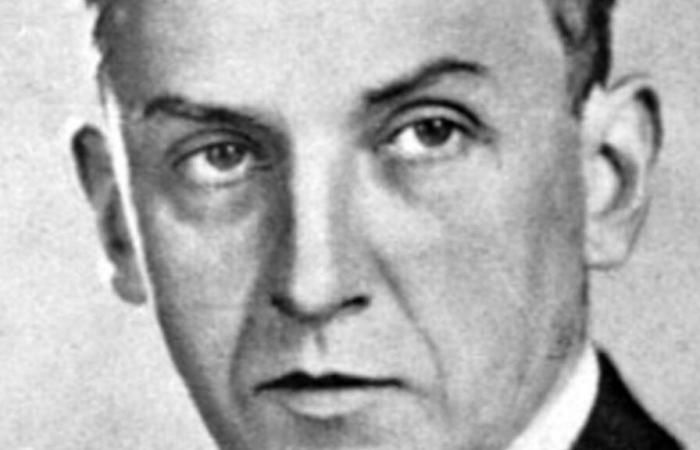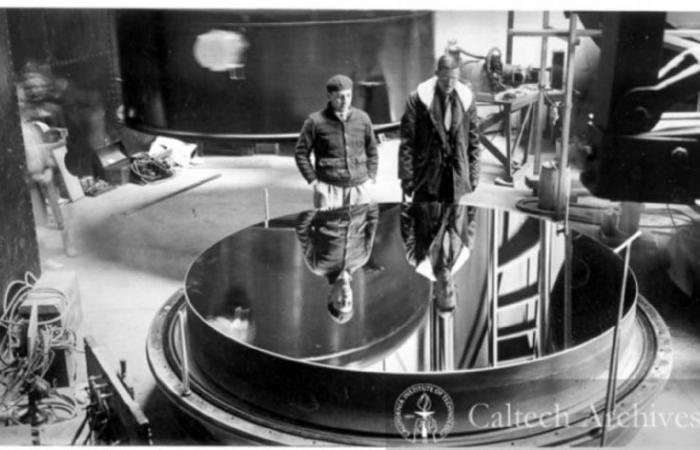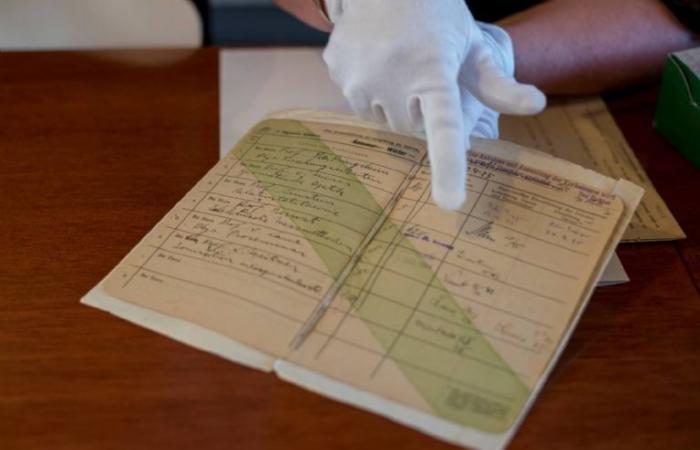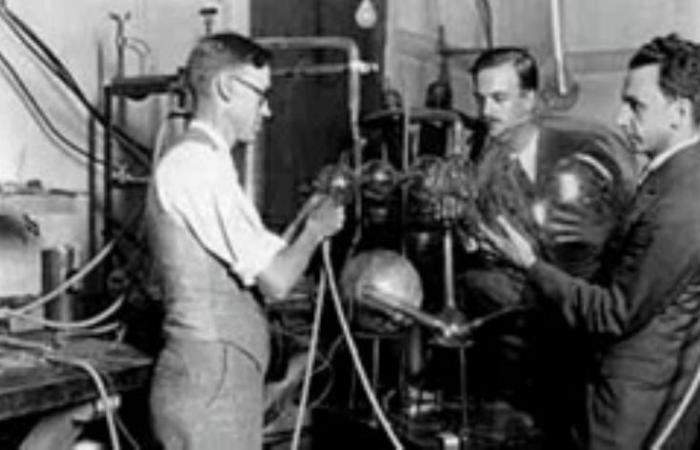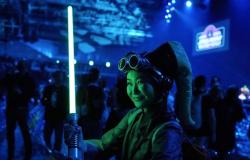Ramón Enrique Gaviola The Rivadavia Reduction (Mendoza) was born in the district, on August 31, 1900. He was always affectionately “El Negrito” for his family. He was the son of Modesto Gaviolacommitted neighbor of East Mendoza, who was a mayor of Rivadavia three times. His uncle Estanislao was an outstanding benefactor of the town, occupying several times the councilor’s bank, until in 1894 he also erected in the municipal mayor. Meanwhile, an aunt of the same “Negrito” Gaviola (Virginia Gaviola) was Mendoza’s first lawyer.
At that time the district where it was born Gaviola He had, according to the national census of 1895, about 840 neighbors. Although as a positive fact, there were two primary schools in the area with 95 school children; one of them: Ramón Enrique Gaviolawho showed that, even being born in a remote place on the planet, he could become one of the most recognized astrophysicians in the country’s history being awarded worldwide.
Gaviola Among the Nobel
To enhance to Ramón Enrique Gaviola We should mention that once graduated at the university of Berlin, he was part of the select work group of Albert Einstein (Nobel Prize in Physics in 1921), without a doubt, one of the people who contributed the most to the progress of humanity from their scientific contributions.
But not only that marked the life of Gaviola. He had as teachers and co -workers, nothing less than 23 Nobel Awards, in addition to Einsteinthroughout his professional career, which helped the Rivadavian scientist become an unavoidable reference for world astrophysics. In addition, as a sample of the prestige of Gaviolaand proof of the enormous intellectual and scientific respect that Einstein He gave him, he invited him to sign the adhesion to the so -called “Chicago Manifesto” or “Nobel’s Manifesto” (June 22, 1948), where the governments of the world were alerted, and to the whole humanity, about the atrocious dangers that would imply the use of nuclear energy in war instances. All the signatories of the manifesto were Nobel Prizes. The exception was Gaviola. “For your achievements, you must and deserve to sign it”; They were words of Einstein.
The discoverer of the laser beam
In his career he also worked with Jean Pierre Perrin, Nobel Prize in the ’26, who was the first to measure the electron load and show the atom organized in the similarity of the solar system. In addition, stimulated by Einstein He participated and won a scholarship that allowed him to work in Baltimore (United States) with physicist Robert W. Wood, known worldwide for his work by discrediting the existence of N Rays. Gaviola It was first in the order of merit, but the scholarship was denied because the award to someone who was not American or European was not planned. The situation caused the anger of Einstein himself who claimed in writing the representative of the Rockefeller Foundation. The situation was reversed, becoming Gaviola into the first beneficiary from the southern hemisphere.

But the glittering appearance in the “major leagues” of Gaviola was when in 1928 he made the first experimental check of the stimulated atomic broadcast, already predicted by Einsteinbeing the experimental verification of what was subsequently known as laser beam. “You have overcome me”; again the humility of Einsteinconsidering the Rivadaviense.
The Argentine atomic bomb: “The truth is never sad”
“General; I don’t have too many opportunities to talk to you. But I must tell you that you are lying to you. You must know, because if not, you will become an accomplice.” Here is a synthesis of the brief message between Gaviola and General Perón.
The concrete thing was that Gaviola’s scientific course allowed him to gain universal recognition for his research on particle acceleration, cosmic rays and cold fusion. Back to Argentina he was part of a large number of scientific ventures. The most renowned was at the pilot atomic energy plant on Huemul Island, San Carlos de Bariloche, where thermonuclear reactions were carried out, generating an atomic bomb design along with the Austrian Robert Richter.

He will touch Gaviola unmask the hoax. He was himself, in charge of anticipating the same general that the experiment would succumb, since Richter was deceiving him in terms of the immediate advances he declared, and that said experiment represented a scam to the country. Hard truth that it didn’t like that time. Gaviola slaughtered and the case was diluted quickly.
What should be the “Gaviola Institute”
He was also one of the founders of the current Balseiro Institute, projecting in parallel, the installation in the country of the first station of the Southern Hemisphere for the monitoring of space satellites. And it was José Balseiro himself who proposed that the institute that today bears his name should be called “Enrique Gaviola”, but since he was not condescending with Peronism, the proposal was not accepted. On the contrary, when the great Balseiro (1919 – 1962) died early, it was Gaviola himself who proposed, together with other scientists, the name of his young deceased disciple.
Gaviola also worked on the design of the “El Palomar” and “Monte Grande” observatories. It was the inventor of the Pulming System of the Great Mirrors, with what had another high global recognition, designing the world’s first stellar spectrograph, built entirely with mirrors and developing an avant -garde theory with respect to the cascade of the cosmic rays. He was also director of the Astronomical Observatory of Córdoba, creator of the Astrophysics Station of Bosque Alegre and among his disciples are Mario Bunge, the aforementioned José Balseiro and Ernesto Sábato.
Cosmic kite: the man who has an asteroid
With innumerable awards in the highest and prestigious scientific centers in the world, “El Negro” Gaviola is part of the encyclopedia “Notable Tweintieth Century Sdentist”, edited by Emily Murray where the most prominent scientists in the world were recognized. In addition, his photo appears in the “Washington Science and Technology Museum” along with the great physicists of the history of humanity and, as if all this were not enough, the International Astronomical Union baptized an asteroid in 1981 with his name. “The 2504 Asteroid” bears his name, in merit to his discovery in Córdoba (1967).
But even more. It was the precursor of the National Atomic Energy Commission (CNEA) and creator of the Association of Argentine Physics and the famous Institute of Mathematics, Astronomy and Physics and was considered in 1998 among the 20 most prominent astrophysicists in history.
“The Gaviola list”, the scientists’ Schindler
It was a full, contemporary reformist to the events that generated the historic “university reform of 1918” as a student at the University of La Plata. His concern for education was manifested in his book: “Reform of the Argentine University. Breviary of the reformist” (1931). Its wide humanistic conception also made it possible every day at the Balseiro Institute to plant a tree, so the Balseiro Park bears the name of Enrique Gaviola.
His ethical transcendence was reflected when he contributed in the process of Nazism to save the lives of several European scientists who did not commune with Hitler’s regime. “In 1931 he finally returned to Argentina, where he received a letter from the Nobel Prize Max Born, a dean at the University of Göttingen, requesting help to try to save Yuri Rumer, his main collaborator. Rumer was a Jewish physicist who had taken refuge in Germany escaping from the purges of the Stalin regime in the Soviet Union.
His life was again in danger, but now under the new ‘label’ of Jewish and communist. Born’s letter demonstrated the prestige, respect and consideration that Gaviola deserved among the international scientific elite of that time. (…) At that time Gaviola served as a researcher at the National University of Buenos Aires and acted according to what was requested by Born. (…) Years later, the Italian physicist Andrea Levialdi with his wife Lea Ghiron and his Steffano son, escaping first from the Italian fascist regime in 1938 and after the France invaded by Germany in 1941, they could finally embark on the last ship with Jewish refugees that left the port of Barcelona to South America. A few days after the arrival of Levialdi to Argentina, Gaviola began the process to hire him as a researcher at the Astronomical Observatory of Córdoba, where he incorporated it on January 8, 1942.
Also in 1942, for information provided from the United States, physicist James Franck, Gaviola contacted the theoretical physicist Guido Beck who, escaping both Nazism and European communism, was in the city of Coimbra (Portugal). In this case Gaviola acted quickly and finally Beck was able to disembark in Buenos Aires in May 1943. (…) Gaviola also helped rescue the Jewish-Polaco Mathematician Rosemblat, who was in Paris. Given the impossibility of hiring him in Argentina, he finally managed to appoint him at the University of San Marcos in Lima. ”
Gaviola forgiveness
Bright Mendoza “El Negro” Gaviola. Platinum Konex Award in 1983, among one hundred of many more distinctions. He died in Mendoza on August 7, 1989, as one of our many unknown and illustrious. He had only his teaching retirement as admission.
Gaviola is the chronic stark chronic. “It is the perfect antihero,” according to the writer and journalist Patricia Rodón. He was recognized in the world. Ignorated practically among us. Regrettable. Fortunately his native apartment, honors with his distinguished name a renewed space dedicated to higher studies, the UNCuyo gave him more than 30 years ago the honoris cause and a Mendoza school bears his name. Not much more. It was immense. Honest, uncompromising and scientific eminence. Although it seems that sometimes that will not reach.

